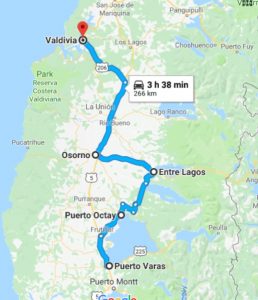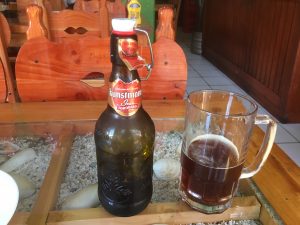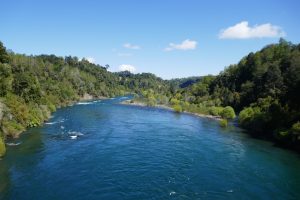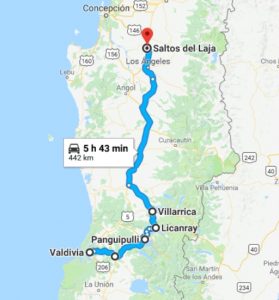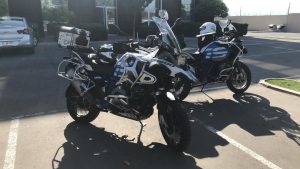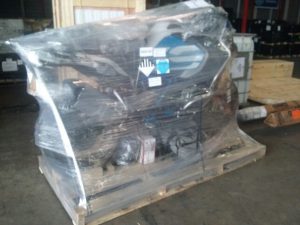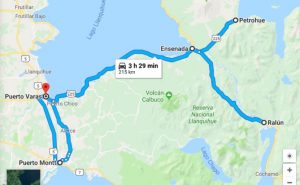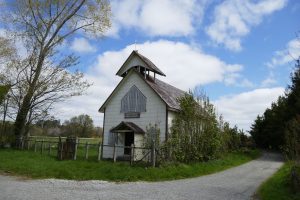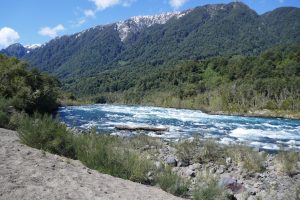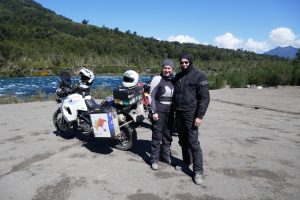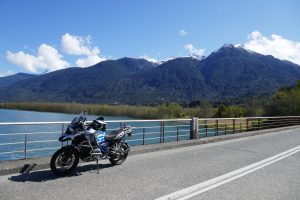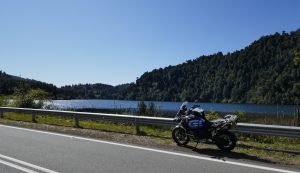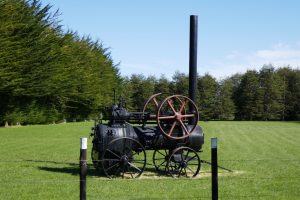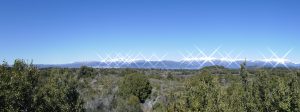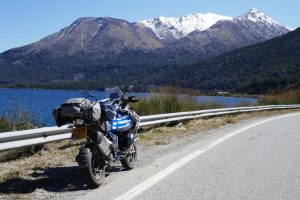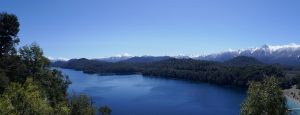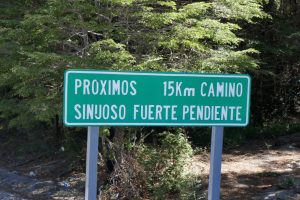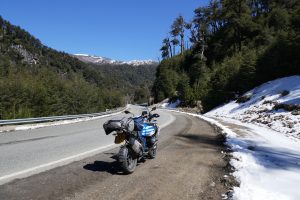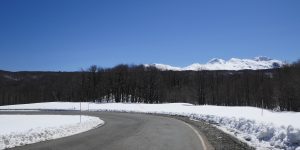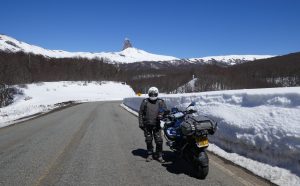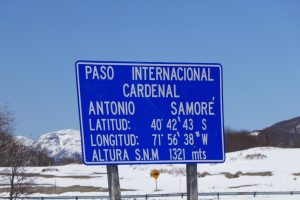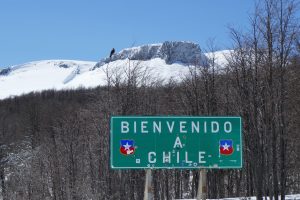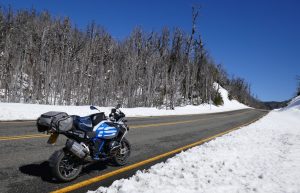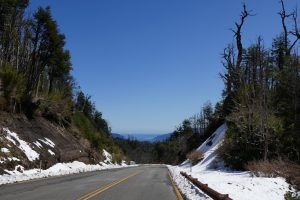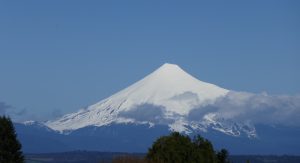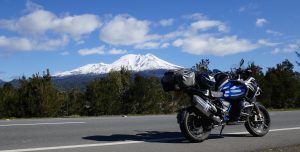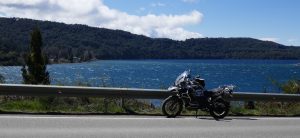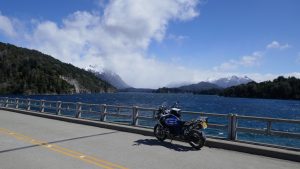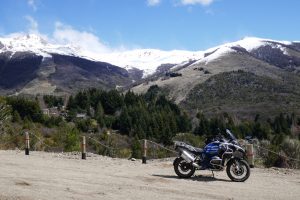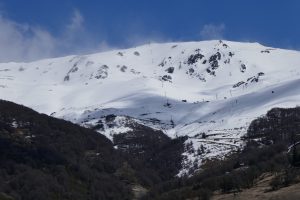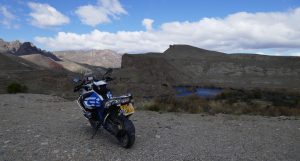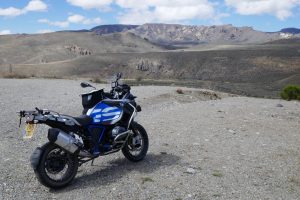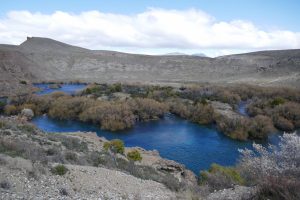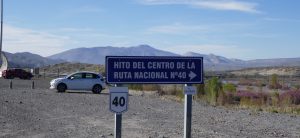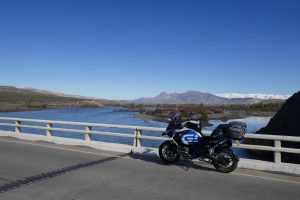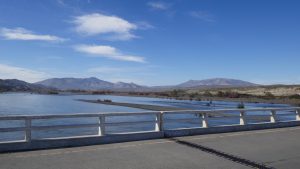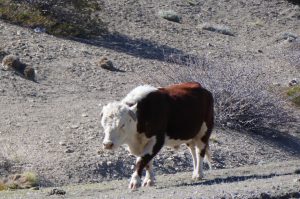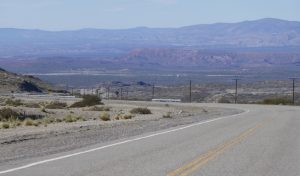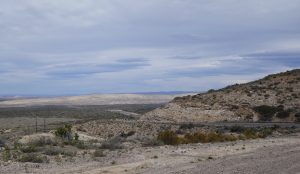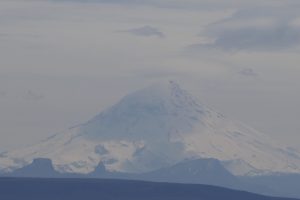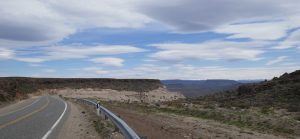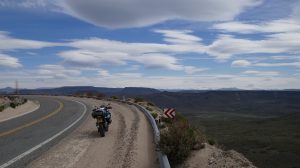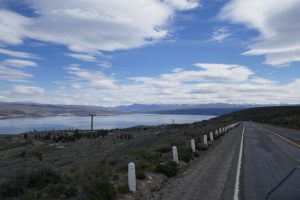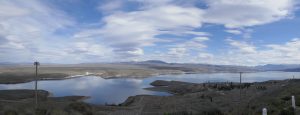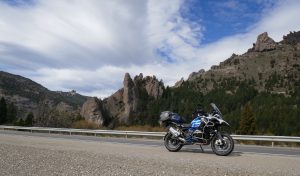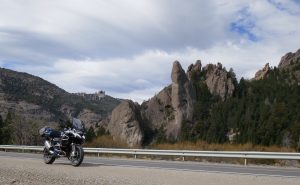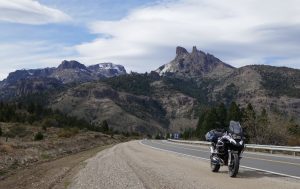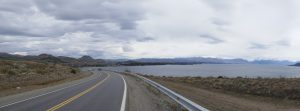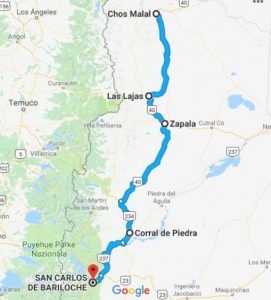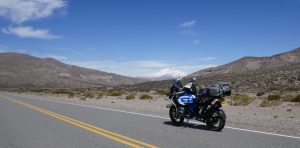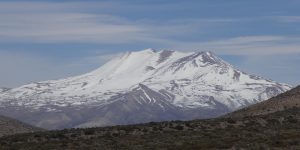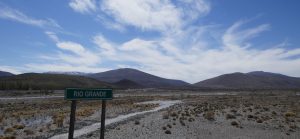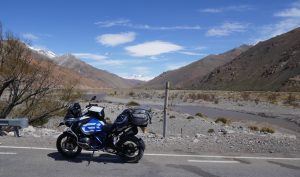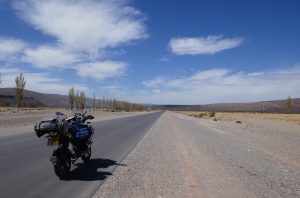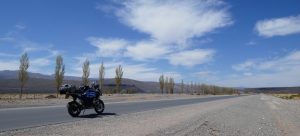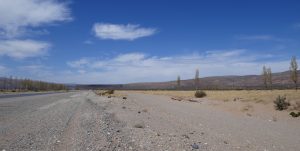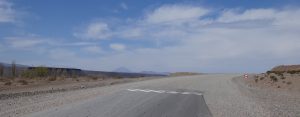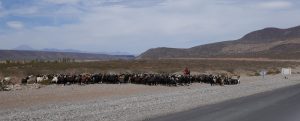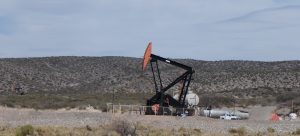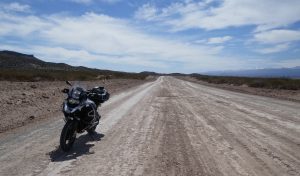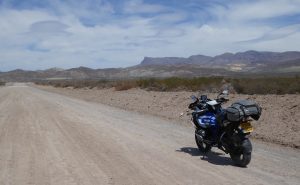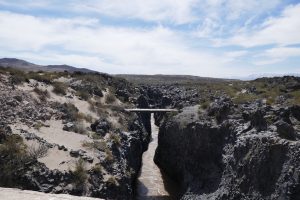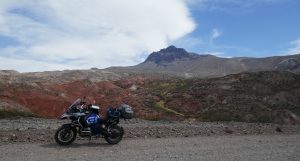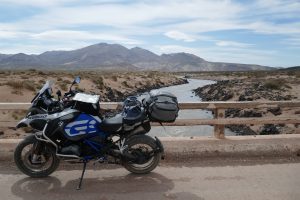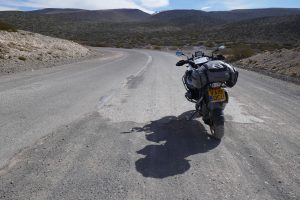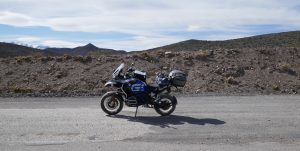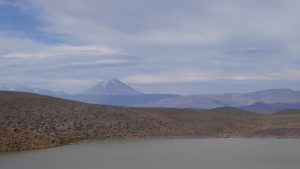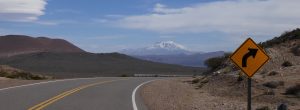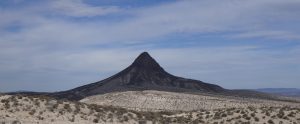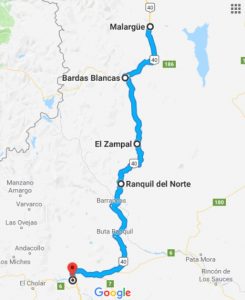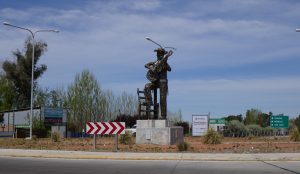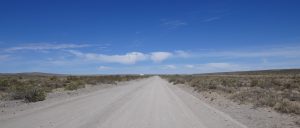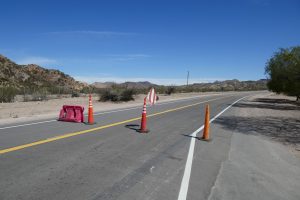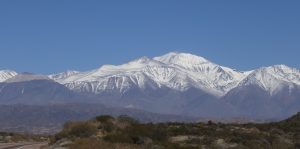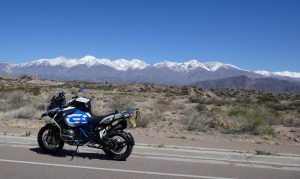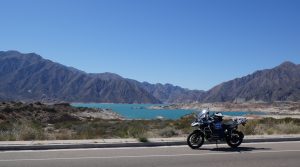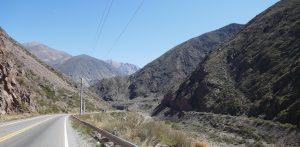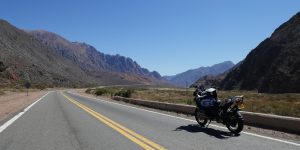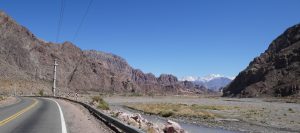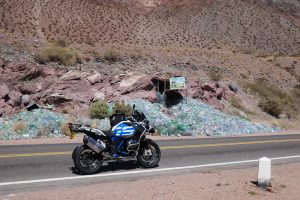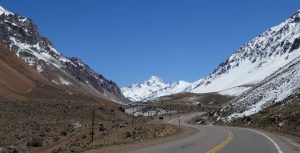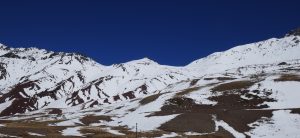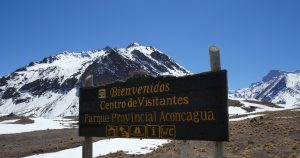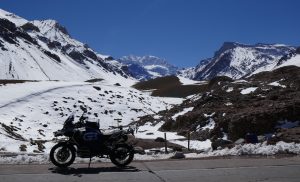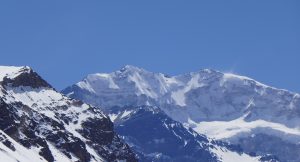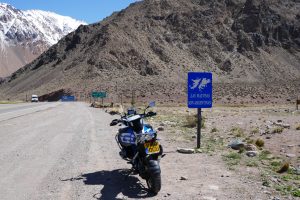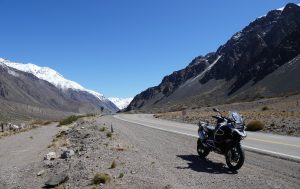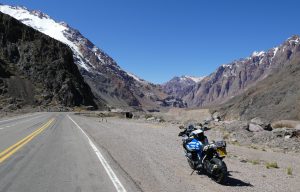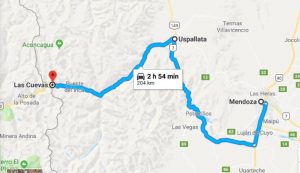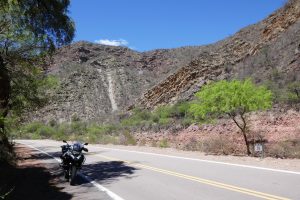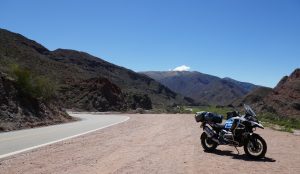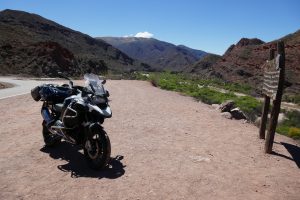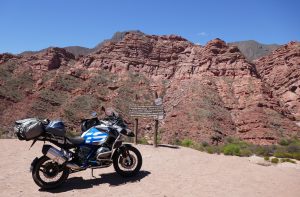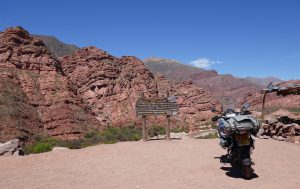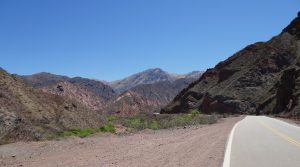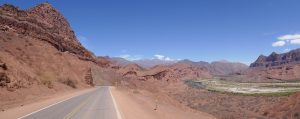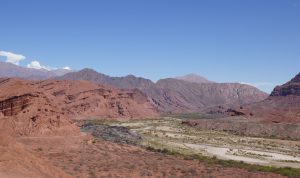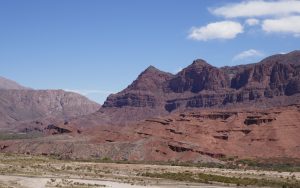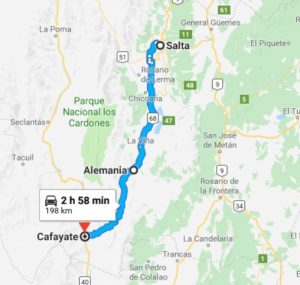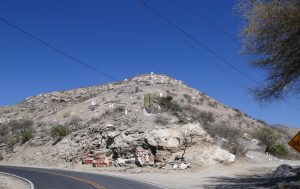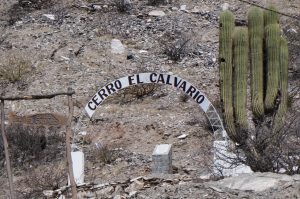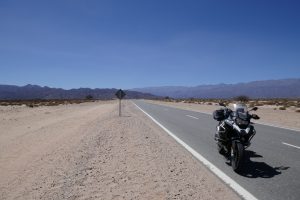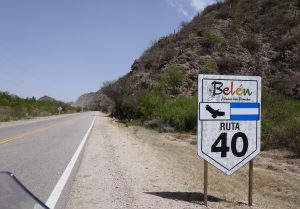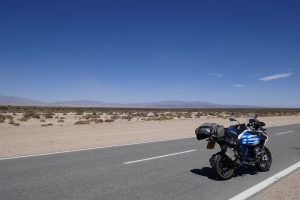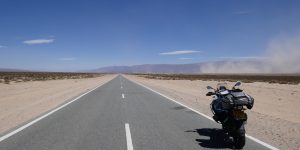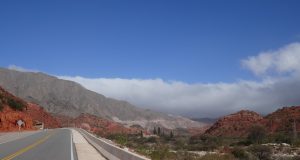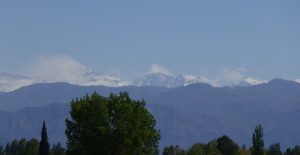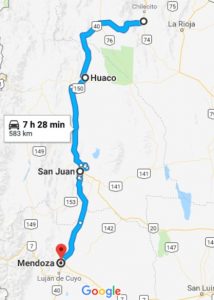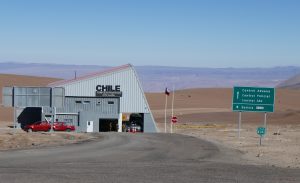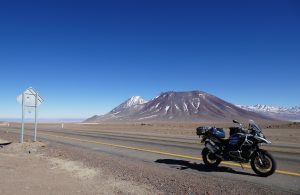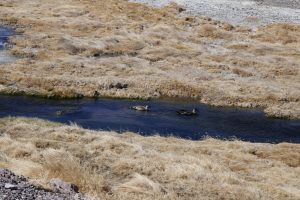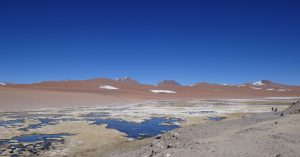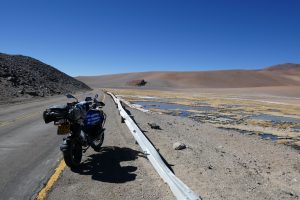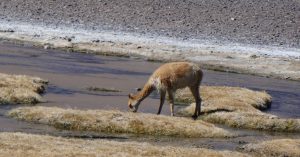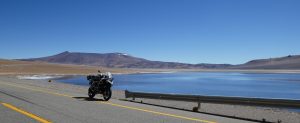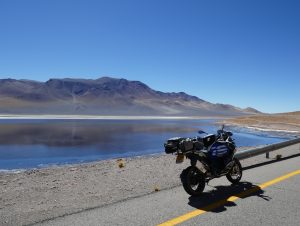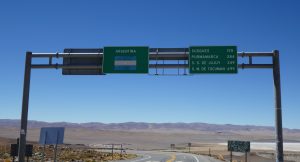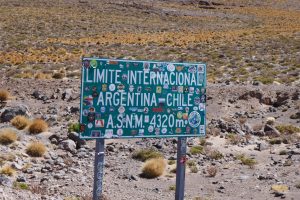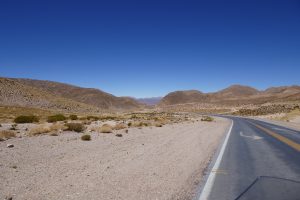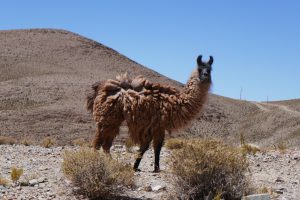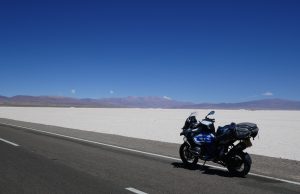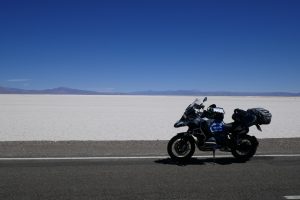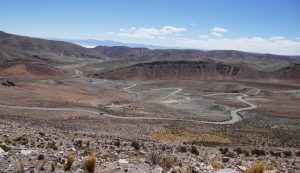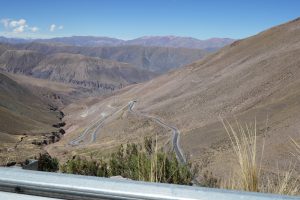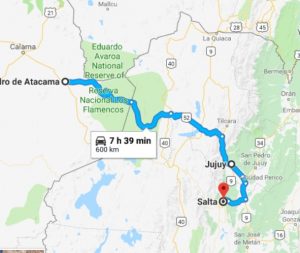It was time to head back to Santiago from where I would be flying back to Madrid on the 16th.
I chose Valdivia as my first stopping point on the route North because it looked an interesting place: https://en.wikipedia.org/wiki/Valdivia
Leaving Puerto Varas I rode up the other side of Lago Llanquihue – the East side – to Puerto Octay, and then up the road I had ridden down two days previously to Entre Lagos where I picked up the 215 towards Osorno.
From Osorno i rode up Ruta 5 to Paillaco where I took the 206 which took me straight to Valdivia. Ruta 5 was noteworthy only for seeing an Artic completely on its side having hit the central barrier. The barrier had done its job well. The Artic hadn’t crossed over and had just entirely blocked of the overtaking lane.
The 206 was noteworthy only for the chap in the Pick Up truck who thought he could keep up with me. It was the usual story in that sooner or laterI will make the overtake he can’t and by the time he gets past that car/van/lorry I have made one or two more overtakes and am long gone. What is it that gets into these peoples heads?
In terms of sights there was nothing new today so I set a new record of sorts – I didn’t take a single photo on the ride.
This was the day’s route:
However, when I got to Valdivia which seemed a nice enough place on a big river heading for the sea a few miles further East, I did head into town and find some beer:
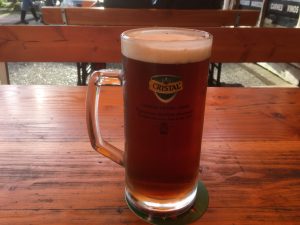
and more beer, Kunstmann this time. The brewery is in Valdivia, which was the port through which the German settlers arrived in the 1800s.
The following day I decided that I couldn’t simply hoof it up Ruta 5. I had the time so decided to head West on the 35 to Los Lagos and then the 39 to Panguipulli, which sits on the lake of the same name.
This was a good choice of route. The road to Los Lagos – the 35 – was very nice and the 39 to Panguipulli was even nicer.
First a view not far out of Valdivia of the 35:
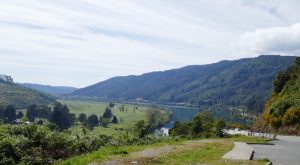
The road -and the almost obligatory disused railway line – follows the river all the way to Los Lagos. The one interesting thing about the railway line, which I had noticed two days before on the ride to Puerto Montt, was that in this section of the country the gauge is the same as the UK and Europe, not the 1 metre narrow gauge I saw North of Santiago. I guess that they only used the narrow gauge where the lie of the land makes it too difficult to use the standard gauge. Anyway I digress.
From Los Lagos the road was even better.
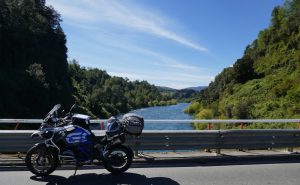
and the view the other way:
and there were the remains of the old bridge:

The road was similar to some of the roads through Mid Wales or maybe the Cotswolds:
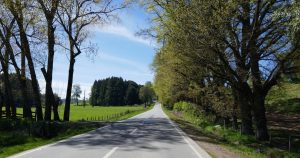
The land is so green that you could forget you were in South America.
And then I got to Panguipulli and I thought – this is a bit like the Lake District!
Except that the Lake District doesn’t have a 2,500 metre volcano in the picture:
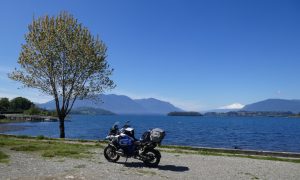
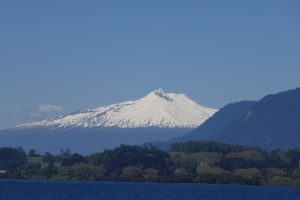
After a break for some hot chocolate in Panguipulli I headed for Villarrica. There was a direct route on the map but part was marked in white only indicating that it was unmade, The cafe owner confirmed there was a 12 Km stretch of unmade road and he said it wasn’t very nice but he also confirmed that the indirect route via Lican Rey was paved the whole way.
this road took you to the start of the unmade bit and as I approached I could see a biker coming towards me and making heavy weather of the going. Any thoughts I might have had about another bit of off roading went straight out of the window. Heading towards Lican Rey the view was dominated by another volcano, in this case Volcan Villarrica:
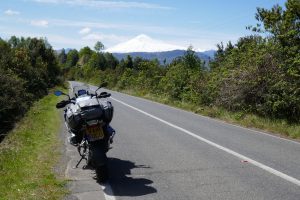
And a close up view:
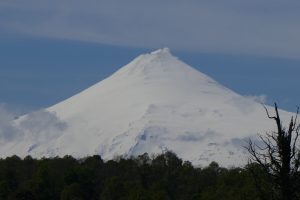
Very symmetrical – almost like Mount Fuji!
The road up to Villarrica wasn’t in the best of condition but it was OK. The town sits on the shores of Lago Villarrica and I took this panoramic shot from the 199 as it left town:

The 199 was not a great riding experience – long straight sections with a kink in the road every few miles – but it served its purpose in enabling me to munch some miles to get me to my destination of Salto del Laja. with the last section on Ruta 5 again.
Booking.com had been the source of all the hotels I stayed in en route. The blurb had mentioned a waterfall and that the hotel was on a private island. Both turned out to be true. What it didn’t mention was that once you had crossed the bridge onto the island, the track up was not motorcycle friendly especially one which weighs 260 Kg without luggage. After a bit of a struggle I made it. The waterfall was, however, probably worth it:

This was my route for the day:
The following day was to be my last substantial day’s ride. I debated another cross country trip but the truth is that there are no really decent alternatives to the main North South route – Ruta 5 – unless you want to add a lot of time and distance to your day. Chile is simply a long and very thin country. There is 1 main North South route and that’s it. By this stage I decided not to try my luck any more. Thus far I had kept it upright and the bike hadn’t missed a beat, so Ruta 5 is was going to be. As an indication the Sat Nav said the fast route from Salto del Laja to Santiago was a touch over 300 miles. Take Ruta 5 out as an option – simply set the device to “Avoid Toll Roads” – and it was well over 425 miles.
So Ruta 5 it was. My first really easy day on the bike. Just over 300 miles in 4 and a quarter hours with a fuel stop and various stops for tolls along the way. The tolls for the bike aren’t expensive, probably only about 3 or 4 £ or Euros for the whole 300+ miles.
It was, however, noticeable that the Chilean Carabineros take their speeding seriously. I saw 5 separate groups with laser guns along the route. In Argentina I never saw one.
So I reached the hotel for my last 2 nights in plenty of time, especially for a beer, Austral this time:
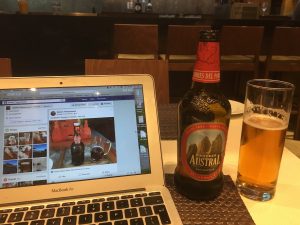
The following day was a day of rest subject only to one last task which was to deliver the bike to the freight agent. I didn’t want to have any potential hassle with the Chilean Customs on the day of the flight, and the agent – Julio Harboe of D&D Cargo SA – said I could drop the bike at his house and he would take it from there. He said he would be round at 5.00pm so I could follow him to his house.
I was ready and waiting when I noticed the mirror image of my bike coming into the hotel. It was Julio:
His was the fully loaded version of mine which I had deliberately specced with the minimum of things which could go wrong far from home. So my only options were Tyre Pressure Monitors, the SatNav fixings, the up and down quickshifter, and the must have – Heated Grips! Having dropped the bike off Julio presented me with a sticker saying I was now a member of the BMW Riders of Chile – of which he was a Director, and then drove me back to my hotel. Tip top service.
The following morning was restful. Airport shuttle from the hotel to the airport which was only about 2 Km away, quickly through Passport Control and Security, locate the Lounge and relax.
But on the way to the departure gate there was still time to burn off some Chilean Pesos by having a last beer:
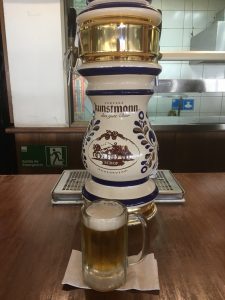
I will next see the bike in a week or tow’s time when I pick it up from Motofreight, the UK freight agent who shipped the bike out to Chile.
In the meantime I have this photo which Julio sent me of the bike all wrapped up and ready to go:
In summary, the Odometer said I rode 5,058 miles or 8,093 Km. I rode on 20 days so an average of 250 miles or 400 Km a day. My highest point was 4,835m on the ride from san Pedro de Atacama to Salta. I took in the region of 1,000 photos of which I kept just over 300 and posted here. I drank a not excessive amount of really good local beer and some of the local wine and a small amount of Pisco, the local spirit. As noted above the bike didn’t miss a beat.
All in all a very good bike trip.

